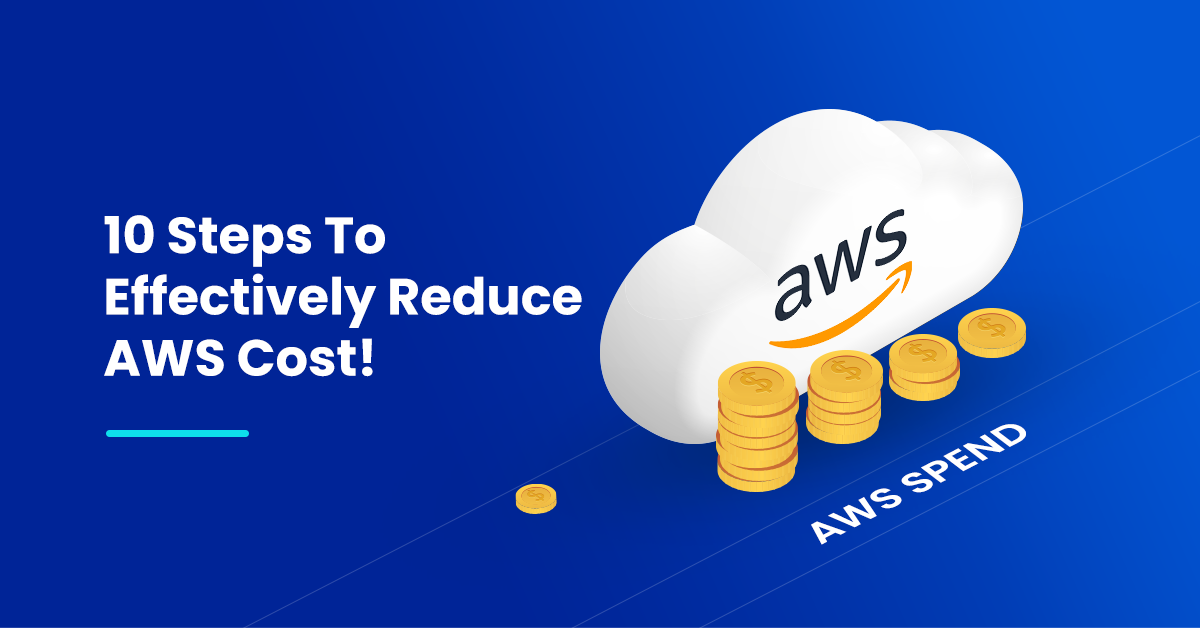For over 76 percent of companies, optimizing cloud costs is a huge challenge. As a result, they end up wasting 30% of their total cloud spend.
While AWS has many benefits and hardly any upfront costs, AWS cloud bills can quickly stack up if you are not careful.
As a result, organizations don’t just need to budget their cloud spend but also take steps to reduce cloud costs effectively. This article looks at the top steps to reduce AWS costs without decreasing efficiency.
1. Analyze Your Current Cloud Costs
Before taking any steps to reduce AWS costs, it’s important to find out your total AWS spending and your ideal cloud budget. After all, when you don’t know the areas where you are overspending, it will be challenging to get cloud overspending under control.
Many businesses struggle to understand the AWS pricing system, which is how they end up paying for more than they use. When it comes to AWS, you pay for all that you provision, and there are also additional services that increase costs.
Moreover, the complex AWS bills and extensive Cost and Usage reports can further make it difficult to visualize how much you are spending on resources, applications, or storage.
A better way out would be to use a third-party cost management tool that can help you visualize computing, storage, and database costs in AWS.
Through in-depth visual reports, nOps helps you review costs for every resource, application, and business unit.
2. Select the right instance size and type
Selecting the right instance size and type in AWS is a critical step in optimizing performance and cost. When evaluating instance types, consider the workload’s CPU, memory, and storage requirements, and choose an instance type that meets these needs while allowing room for scaling.
3. Pause Idle Resources
An idle resource in AWS is a computing resource that has been provisioned, but it is currently not being utilized for any kind of processing. These resources consume a large amount of computing power, leading to high costs. By regularly monitoring and effectively shutting down idle resources, you can greatly save up on AWS costs.
nOps can identify idle resources and pause them when they are not being used. nOps’ AI constantly learns about your cloud usage pattern to find idle resources during non-peak hours and automatically turns them off to save your cloud costs.
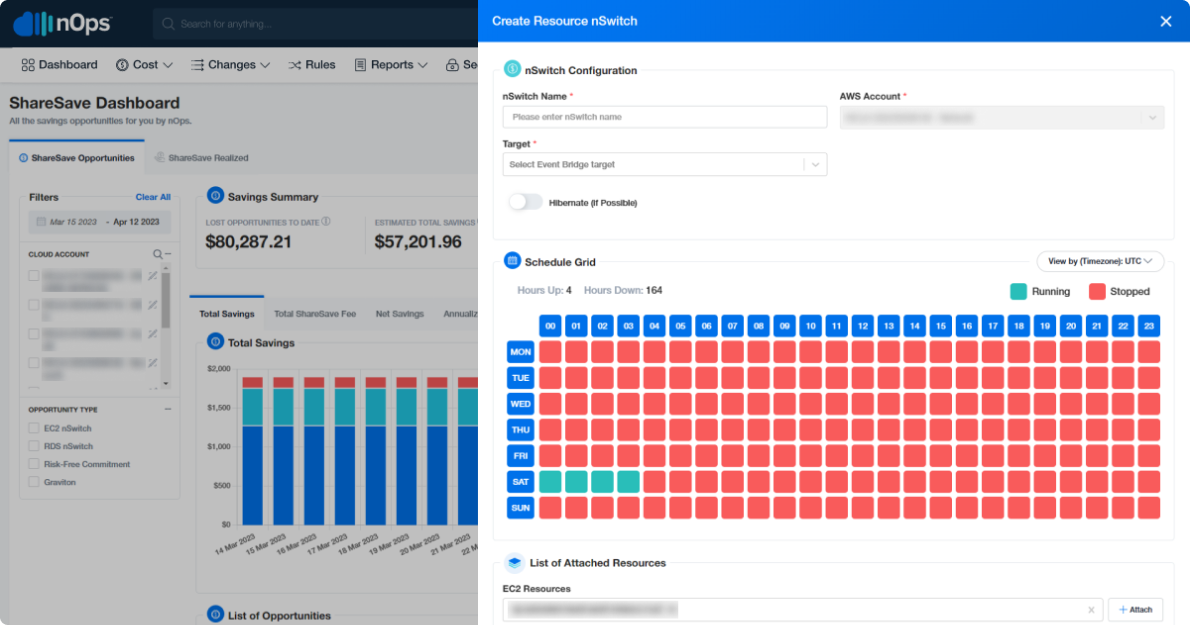
4. Identify Unused or Oversized EC2 Instances
Identifying all the low-utilized or oversized EC2 instances can reduce overall AWS costs and streamline your AWS budget. When you provision an EC2 instance, you pay for its total capacity, not what you currently use. Cutting down on the provision of these instances can be the biggest cost savers of your AWS bills.
You can also rightsize all the oversized EC2 instances to the appropriate size or stop/downsize them to reduce high costs.
5. Delete Unattached EBS Volumes
With Amazon EBS, you get persistent storage for AWS EC2. But when you shut down any EC2 instances, EBS volumes attached to those instances don’t get deleted automatically. If you forget to delete them manually, it can lead to major cloud overspending.
That is why it is essential to look for all the unattached EBS volumes and delete them immediately. If required, you can create EBS snapshots to enable disaster recovery, migrate data across different accounts/ regions, or improve backup compliances. But there are costs associated with snapshots, which should be considered.
6. Incorporate Chargeback/Showback Cost Allocation Strategies
Setting up a cost allocation strategy can give you a more granular view of your total cloud spending across different departments, teams, and applications. More importantly, it can make stakeholders more conscious of their cloud usage.
You can adopt all the cost-effective measures you want, but those measures will only lead to a visible reduction in cloud spend when all the stakeholders are actively involved.
Introducing chargeback or showback policies can push teams to become more proactive in saving up cloud costs.
nOps allows you to establish and enforce cost allocation strategies by enhacing optimal tagging. It helps you gain visibility to tagged, untagged, and even mistagged resources and take action accordingly. You can also create in-depth cost allocation reports to better understand your cloud spend.
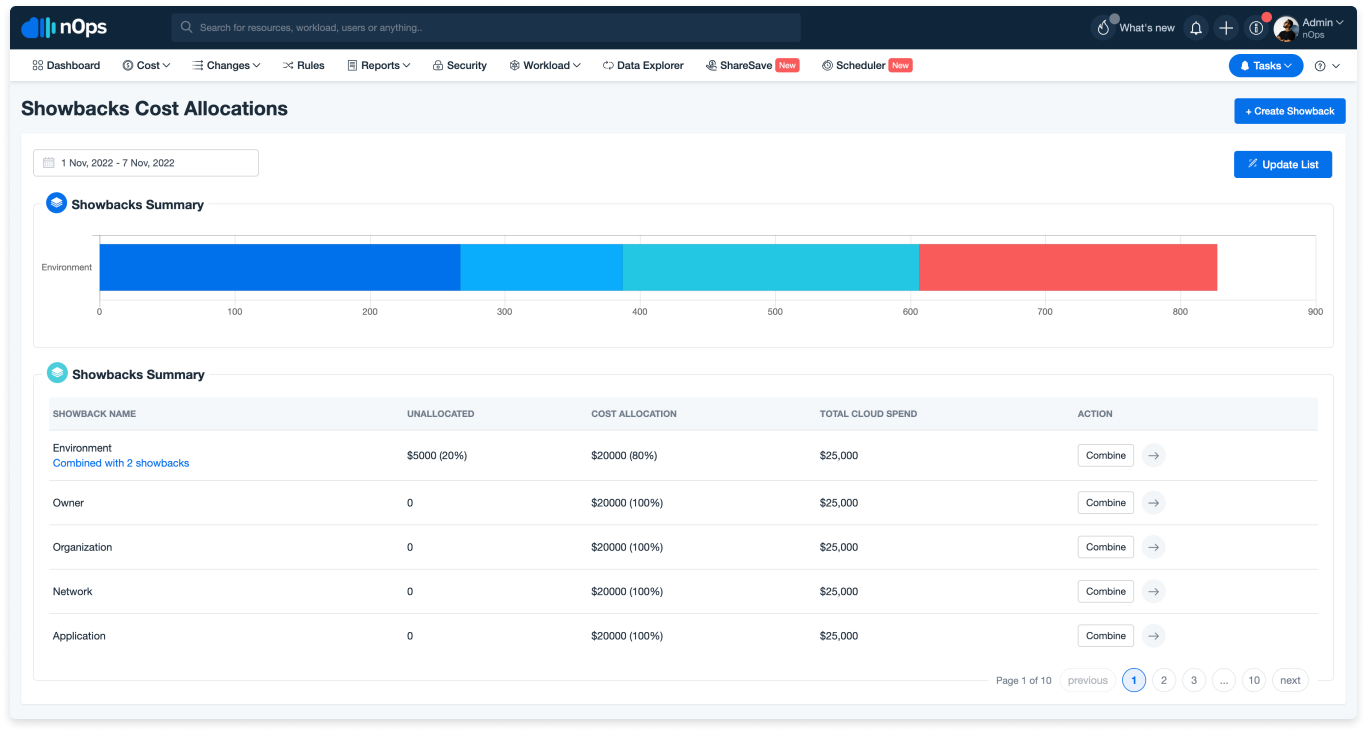
7. Leverage EC2 Spot Instances
Spot Instances offer the best discounts on Amazon–up to 90% compared to on-demand instance prices. With Spot Instances, you bid on the spare computing capacity in Amazon’s open market. But EC2 Spot Instances can interrupt your workload if the required capacity is unavailable or the current spot price has exceeded the maximum price set by you.
If your organization’s overall workload is fault-tolerant, then using Spot Instances can be a major part of your AWS cost reduction strategy.
8. Use Reserved Instances
Reserved Instances (RIs) allow you to save costs by making upfront commitments to use a specific amount of computing capacity for one year or three years. When you buy an RI, you can pay upfront for the entire term or pay a considerably low upfront fee to get a lowered hourly rate. But either way, you will end up paying less compared to on-demand instances.
You can only save costs with RIs when you actually end up using them. If there are any underutilized or unused RIs, it’s necessary to use them for a new application or assign them to an existing application that was previously running on more expensive on-demand instances. If neither of those options is possible, consider selling the RIs on the Reserved Instance Marketplace.
nOps provides effective Risk-free commitments where you get real-time, risk-free, and automated lifecycle management of RDS and EC2 commitments. With the help of nOps, you can switch between different commitments and their types as and when needed.
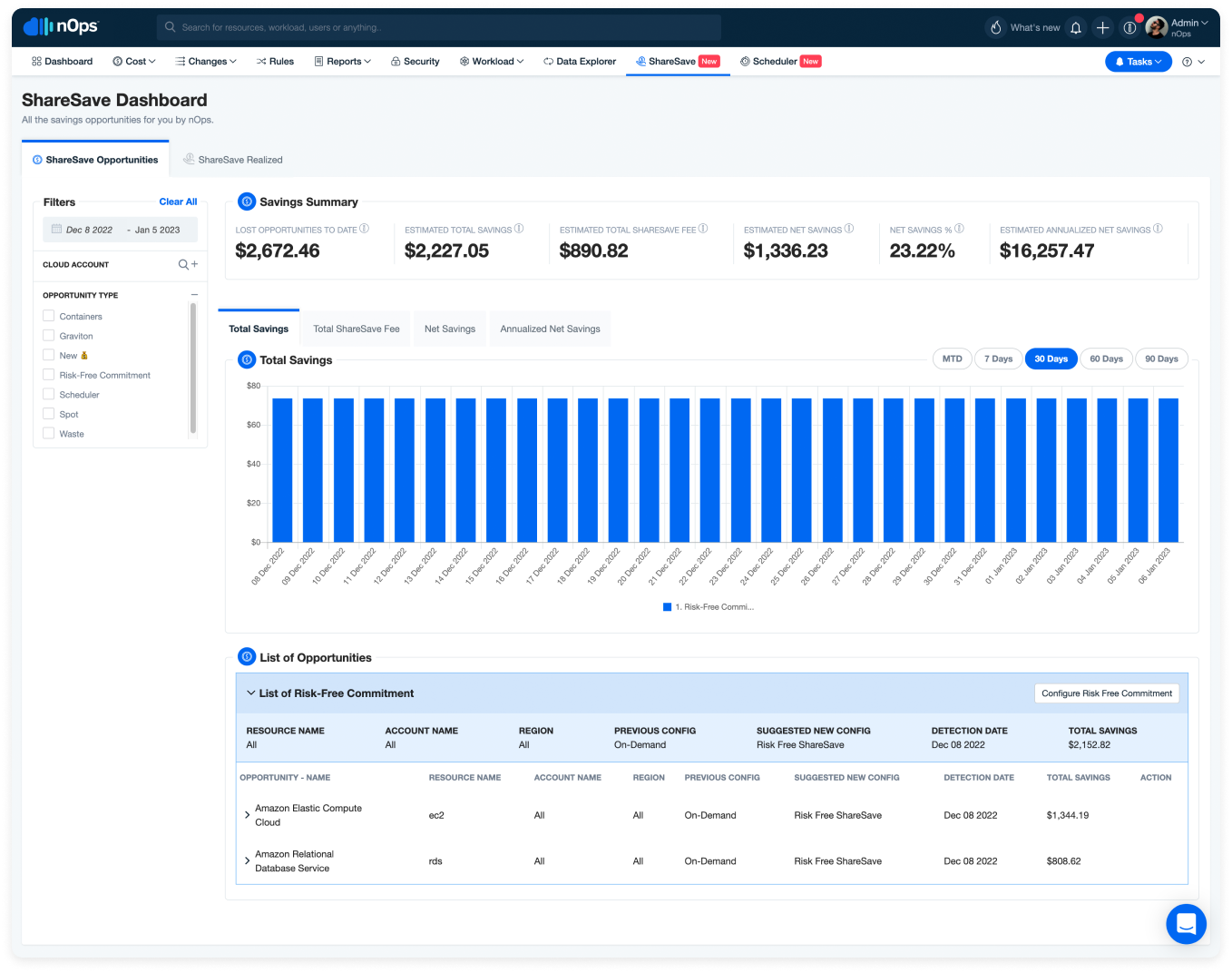
9. Adopt AWS Savings Plan
AWS Saving Plans provide discounts on EC2 Instances but require a minimum computing power commitment of one or three years. Any additional usage over the specified commitment is charged according to the present on-demand rate.
Two types of AWS Saving Plans are available:
- Compute Savings Plans: These plans can be applied to any EC2 instance and offer the most flexibility. As compared to convertible RIs, they cost 55% less.
- EC2 Instance Savings Plans: These plans can also be applied to any EC2 instance but within a specific region. As compared to standard RIs, they provide up to 72% discount.
10. Configure AWS Autoscaling
AWS auto scaling allows you to automatically adjust the capacity of the different AWS services according to the changes in demand. You can establish autoscaling policies and set targets based on different factors like costs, availability, and current utilization of resources.
When you have instances that do not get used all the time, configuring auto-scaling for them can save you a lot on cloud spend.
How Can nOps Help You With AWS Cost Optimization?
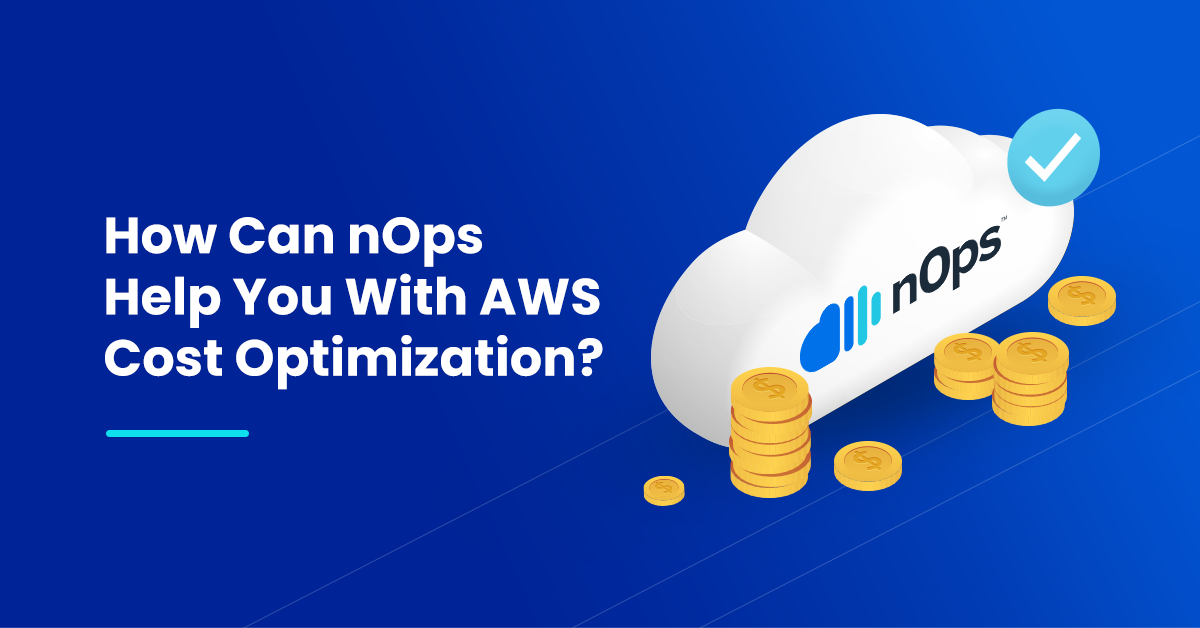
While there is a lot that can be done to reduce AWS costs, it can also take up a lot of your time and eventually take your team away from their core responsibilities. Instead, you can automate the entire process with the help of an AWS cost optimization tool like nOps.
nOps is a fully automated AWS cost management platform that can save up to 50% on autopilot. While your team focuses on innovation, nOps runs in the background to track, analyze, and optimize your AWS costs.
With nOps, you get to:
- Pay less for what you use
- Automatically pause idle resources
Let us help you save! Sign up for nOps today or book a demo call.

